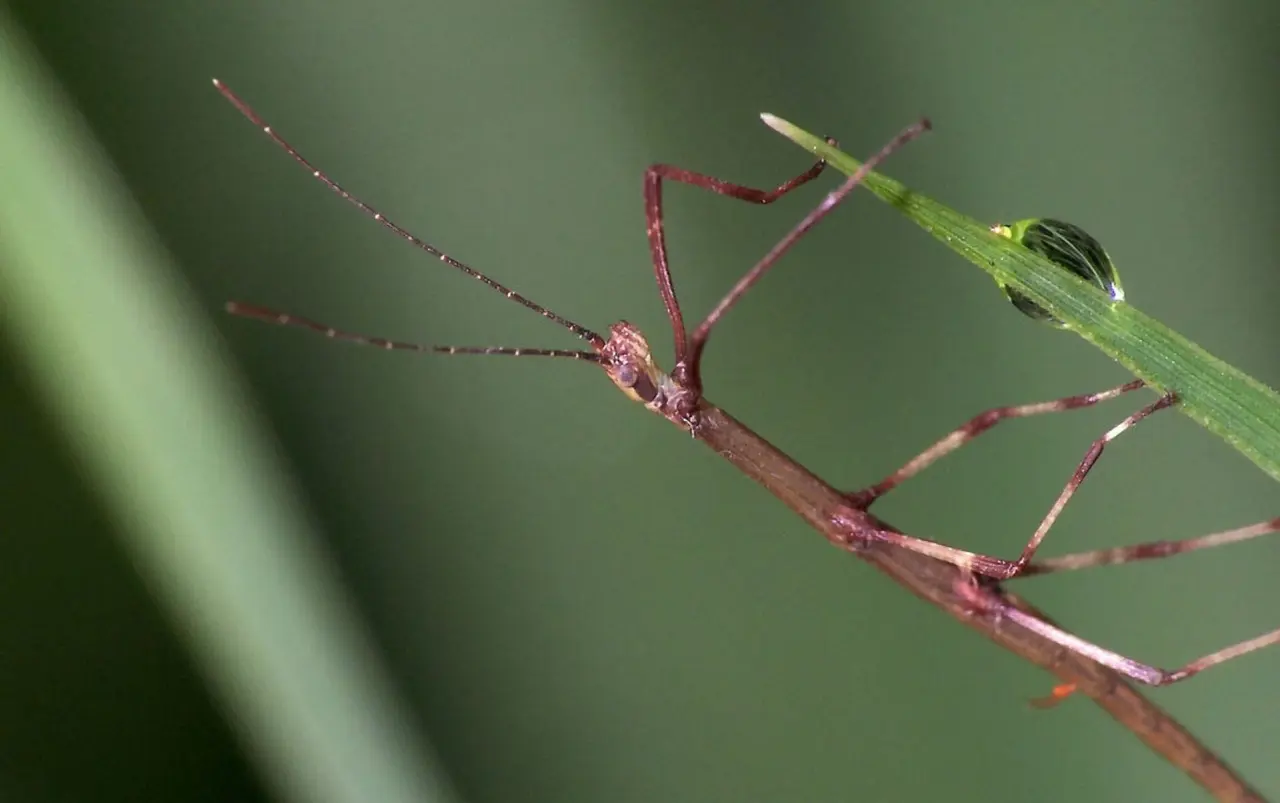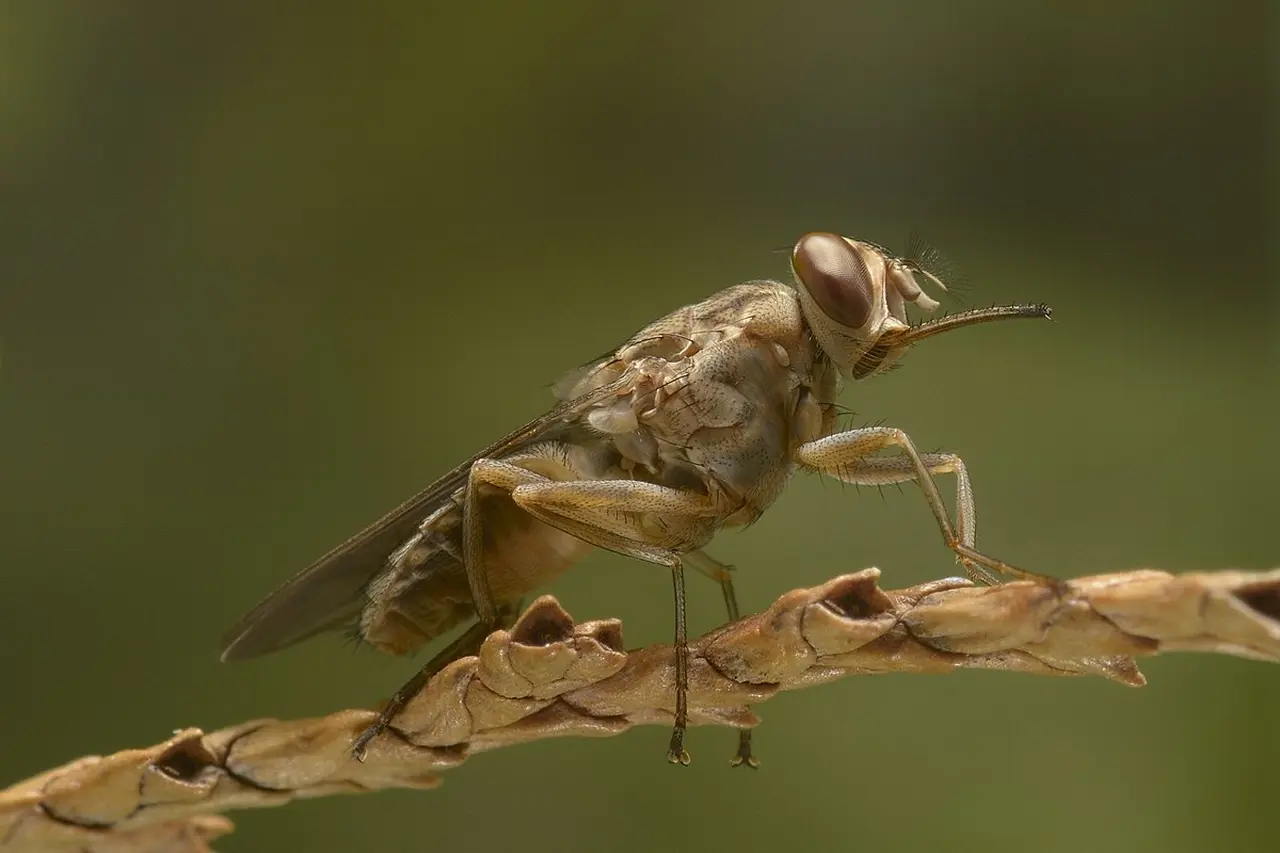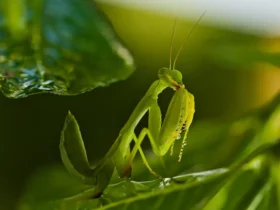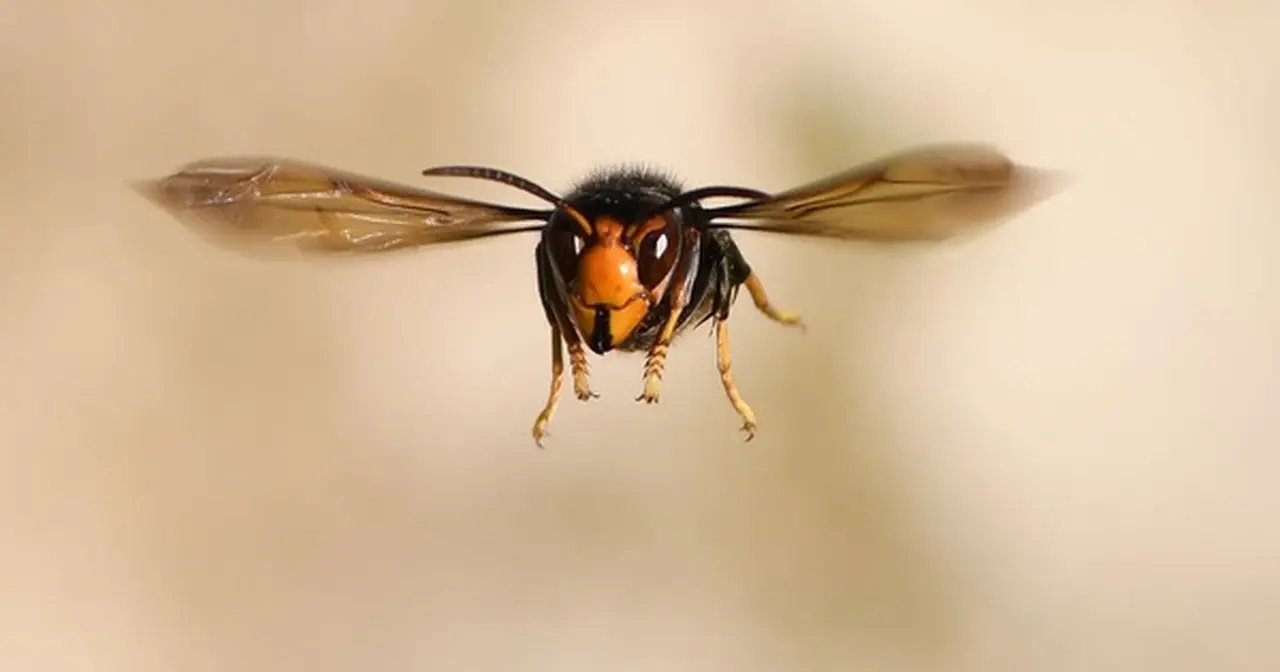The fastest insect species in the world are known for their unbelievably high speeds, which enable them to excel in hunting and evading predators.
Insects comprise a diverse group of living and evolving animal species, among which are insects that exhibit incredibly fast movements, leaving us in awe. This article will provide essential information about the fastest insect species in the world.

Here is a list of nine fastest insect species in the world
Below, we invite you to explore the documentation about the fastest and most agile insect species:
1. Paratarsotomus macropalpis Mite (810 km/h)
This species of mite belongs to the family Anystidae. They have an incredible speed that is 322 times their body length. Despite their extremely small size, they possess remarkable movement abilities that are truly admirable.
With a speed of 0.225 m/s, equivalent to 810 km/h, this speed is even much faster than predatory animals like tigers and cheetahs. Furthermore, the Paratarsotomus macropalpis mite can move on hot concrete surfaces up to 60 degrees Celsius without any difficulty, demonstrating that environmental factors cannot hinder the exceptional movement abilities of this insect species.
The remarkable resilience of the Paratarsotomus macropalpis mite , we see the incredible capabilities of insects in the natural world. Their speed is beyond human perception and requires the use of high-speed photography to capture their movement realistically.

2. Gadfly (145 km/h )
The gadfly is one of the 4,500 species of flies distributed across continents worldwide. It is an insect species that can fly at an incredibly fast speed of about 145 km/h. Moreover, they can change direction abruptly without reducing their speed.
In Vietnam, there are over 80 species of gadflies. They are attracted to and feed on the blood of livestock and poultry, thereby easily transmitting diseases. Bites from gadfly can cause swelling, itching, and can be susceptible to various dangerous bacteria.

3. Honey Bee (60 km/h)
Similar to dragonflies, honey bees can fly at a speed of 60 km/h. Honey bees are probably familiar to everyone, as they are beneficial insects in pollinating plants, producing honey, and aiding in abundant harvests. According to statistics, to produce 1 kg of honey, a bee needs to fly at least 450,000 km, equivalent to approximately 10 orbits around the Earth.

4. Dragonfly (56,5 km/h)
Dragonflies can fly at a speed of 56.5 km/h. They have existed on Earth for nearly 300 million years and are one of the first insect species with wings. Dragonflies can be found in almost every region except the South Pole.
They can fly fast due to their strong body structure and wings. The long and slender body of dragonflies has an aerodynamic structure, with wind channels beneath the abdomen and wings that help minimize air resistance during flight. Their wings can perform flexible up-and-down, forward, and backward movements.
Dragonflies can continuously fly and change directions according to their purpose. They can also perform acrobatic maneuvers while flying at incredibly high speeds. In fact, they can hover in the sky like a helicopter.
With their incredible flying speed, dragonflies easily locate their prey and demonstrate their exceptional hunting skills. They can search for food in the air, with a success rate of up to 90% in capturing prey, and can even devour their prey while flying in the sky.
Dragonflies are completely harmless to humans. In addition to their speed, they also play a beneficial role by preying on mosquitoes, thus reducing the risk of diseases. They also capture insects that can harm crops, thereby protecting agricultural harvests.

5. Spurge Hawkmoth(54 km/h)
The spurge hawkmoth, also known as the flycatcher hawkmoth, is an insect species that can fly at a fast speed of 54 km/h. This butterfly species has a unique and beautiful appearance. They are harmless to humans and, instead, they play a crucial role in pollinating flowers and aiding in fruit production, contributing to a bountiful harvest. Moreover, butterflies add their vibrant colors to the world, making it more visually appealing. Various butterfly species can be found across different continents, especially in abundant flower fields.

6. Grasshopper (20 km/h)
Grasshoppers are known to move at a speed of 20 km/h. They are insects with long straight wings extending beyond their abdomen. The body length ranges from 3 to 4 cm, and they are typically greenish-yellow or brownish-yellow. Their triangular-shaped heads have short, filamentous antennae, and their large compound eyes have a dark brown stripe running along both sides of the thorax. The dorsal side of a grasshopper is longer than the head, and the abdomen has a tapering shape with large hind legs. They have the ability to jump far distances. Grasshoppers are mainly found in Asia and Africa.
In Vietnam, grasshoppers can be found everywhere, especially in rice fields and grassy areas. They hide in thick bushes and grass and often lay their eggs in the soil, particularly in sandy or loose soil, about 10 cm deep. They reproduce in clusters, and the eggs of grasshoppers resemble yellow grains of rice. These eggs hatch sporadically within a period of 3 to 5 days, continuing the cycle of grasshopper generations.

7. Tiger Beetle (9 km/h)
The Tiger Beetle can fly at speeds of up to 9 km/h (125 times its body length per second), making it a relatively fast-flying insect. These beetles can be found on almost every continent and have a slender body ranging from 10-70 mm in length. They can have body colors of green, black, and may have numerous small spots on their wings. Tiger beetles have large eyes, long antennae, and notably, long and thin legs.

8. Flea (6 km/h)
Pest insects, such as fleas, are known to move by jumping at speeds of 6 km/h. These insects have very small bodies, often difficult to see with the naked eye. Fleas are harmful to humans and animals as they are blood-sucking insects and can easily transmit diseases. Victims will experience itching and swelling at the site of a flea bite, and there are more serious risks such as malaria, allergic dermatitis, and rash fever. Therefore, when attacked by fleas, timely intervention is necessary to avoid health implications. H9:

9. American Cockroach (5.4 km/h)
The American cockroach was discovered to have a relatively fast flying speed in 1991, with a recorded speed of 5.4 km/h. They are capable of changing their flight direction up to 25 times in their course. They are also one of the fastest ground-dwelling insects. American cockroaches can survive without water for a month and can hold their breath for up to 45 minutes. Additionally, female cockroaches can store sperm from a mating partner to fertilize future eggs.

So, are the fastest insects in the world aggressive or not?
Do the fastest insects exhibit aggression?
There are many aggressive insect species worldwide, and some of them can be deadly if they bite humans. However, the nine insect species mentioned above, the Gadfly can be harmful to both animals and human health if they bite or if they gather around food sources, potentially causing contamination.
Two insect species: the butterfly and the dragonfly, primarily inhabit natural environments such as vast fields, which are their preferred habitats. They hardly pose any harm to human life or health; on the contrary, they assist us in controlling pests, capturing insects, and safeguarding crops and the environment.
Therefore, even though they are the fastest insects or possess beautiful and unique appearances, there will always be beneficial and potentially harmful species among them. However, we should adopt a positive perspective because their presence on Earth has contributed to diverse ecosystems and a much more beautiful world.

The above information provides the necessary knowledge about the fastest insects on the planet. However, the provided information should be regarded as a reference to offer readers new perspectives. We hope you have had relaxing moments exploring this topic.








